
The Karmann Ghia depicted in this case study is a fairly typical 1959 Coupe' of Karmann Ghias found in California in the early twenty first century. Our illustrious founder, Richard Troy, bought this car in the late 1990's with the idea in mind that he'd make it his daily driver. However, shortly after beginning work on it, Richard found a 1968 VW Double-Cab Type II, which is a type of VW pickup truck that seats five (with factory belts), and lost interest in this example as a daily driver. Eventually Richard decided to return the car to service and it eventually became the first Karmann Ghia to set a Land Speed Record as a part of the 36 HP Challenge.
It should be specifically noted that there originally was not any intent to restore this car, merely return it to competent service. The only significant addition to that was a paint job.
Richard got the car for very little money because it had been damaged by a truck trying to turn arround in a culdesac. The poor Ghia was parked and was pinned on the right by a significant curb while struck as it sat, somewhere in the neighborhood of the front left air inlet grille. (Regretably, no images survive showing the whole car as it was just before the accident.) Richard selected this car because he already owned a "donor" from another Ghia that could save this one.

"Before"

Richard's donor piece, from another 1959, wasn't in bad condition....
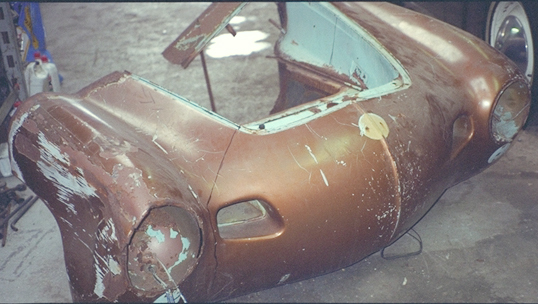
Considering the donor and damage, the front axle was removed and then the damaged sheet metal was cut away using a "Saws-All"...
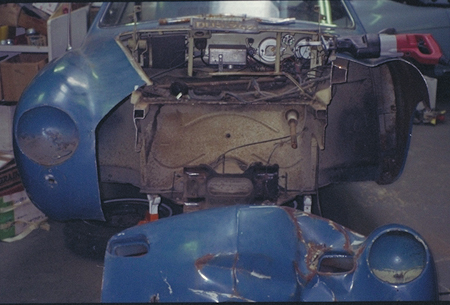
The donor piece was then media-blasted to prepare it for installation...
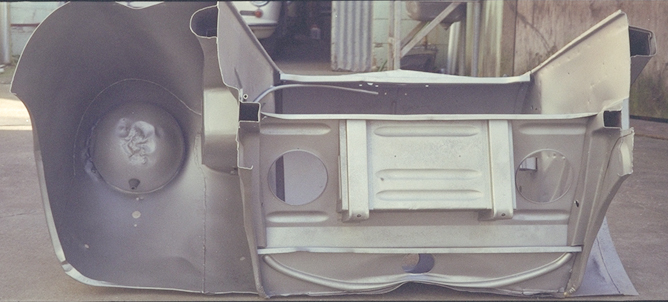
Note the damage to the trunk floor area. The trunk floor was cut out and replaced with a new one and the lower support was straightened out.
From another view...
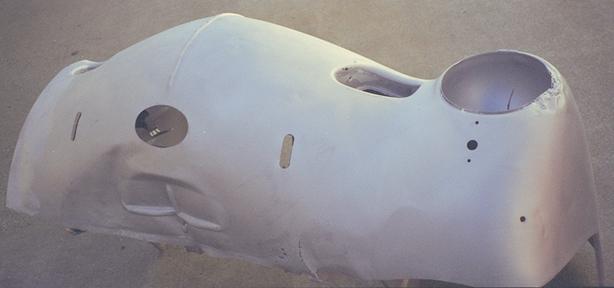
From here you can also see damage to the left headlight area. The outer metal was cut out and replaced. Both this metal and the trunk floor were done before welding the nose onto the car. Also, the nose was completely painted on all its interior surfaces, though the outer skin was left bare so it'd be painted with the rest of the car body.
Here's a close-up of the headlight area before the work was done.
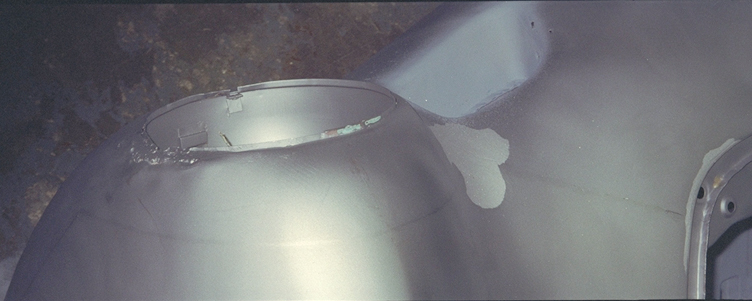
What I like about this image is that you can see the original weld lines from Karmann in the metal! Note that the lighter colord splotch between the headlight and nostril is pweter! That pewter was used as a body-filler, much as we might use Bondo today. (There's a little more near the corner of the hood.)